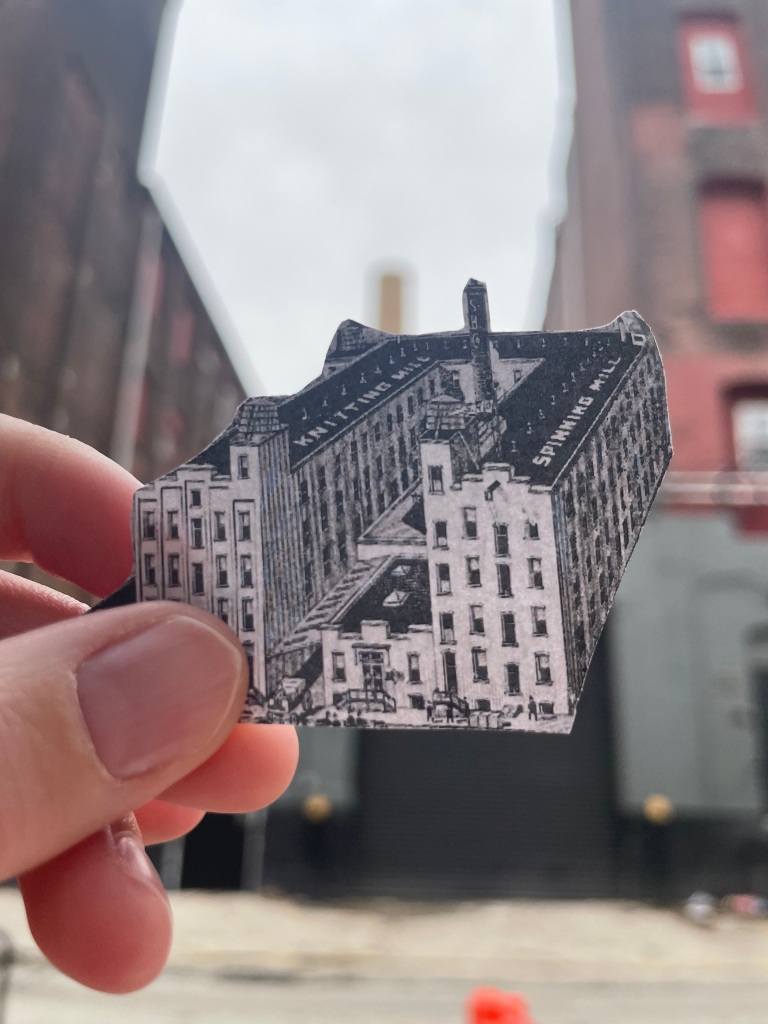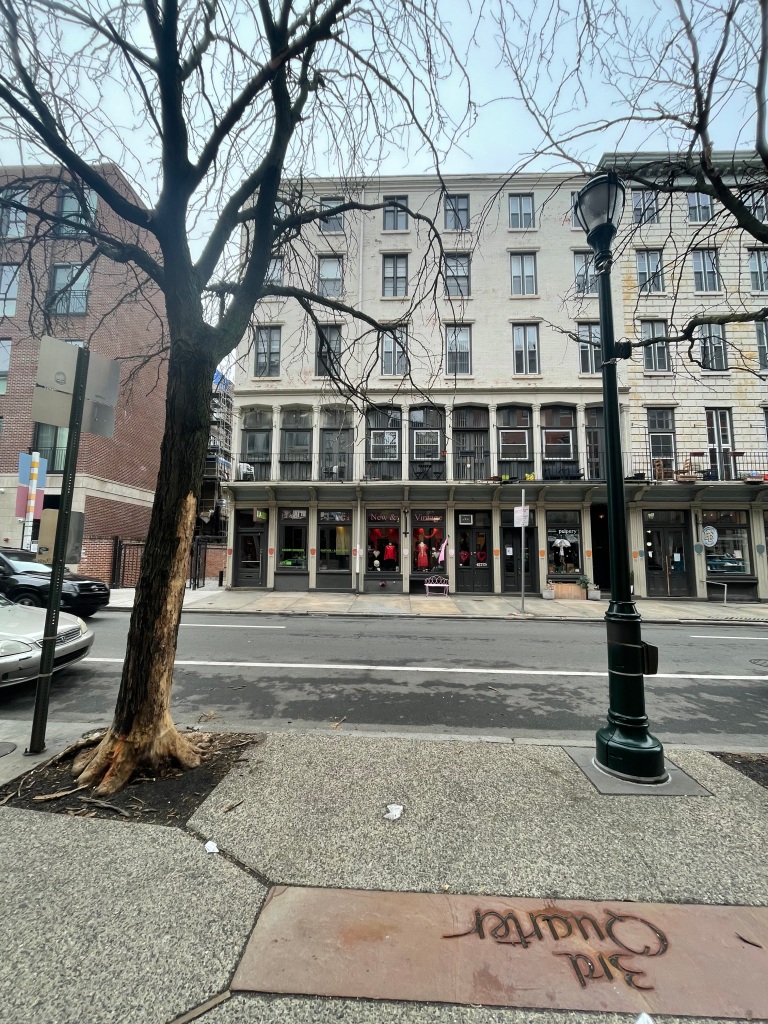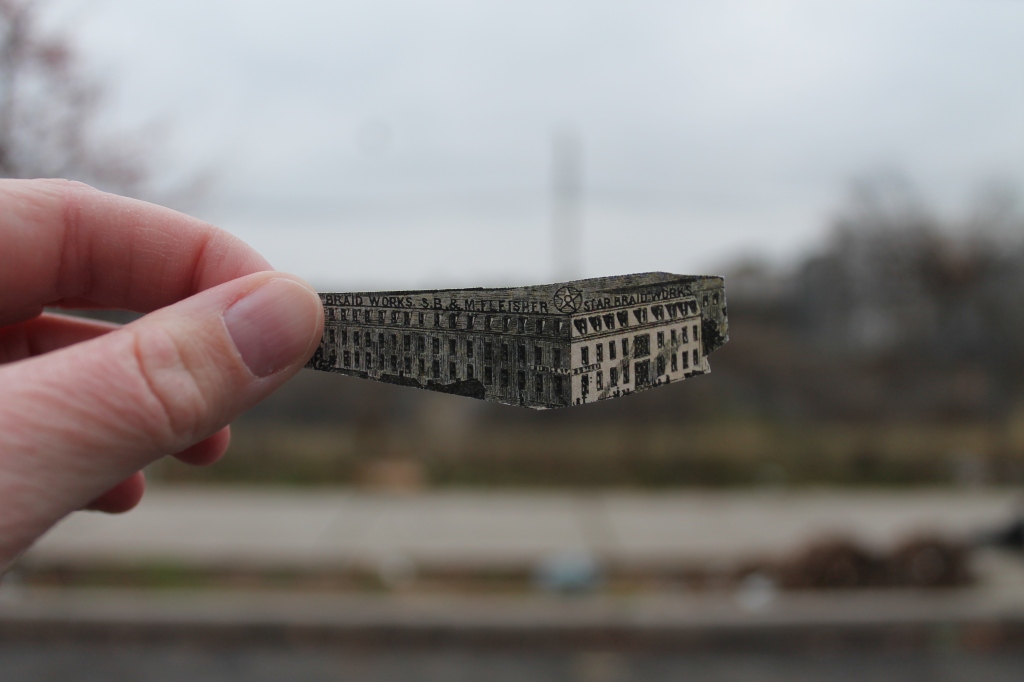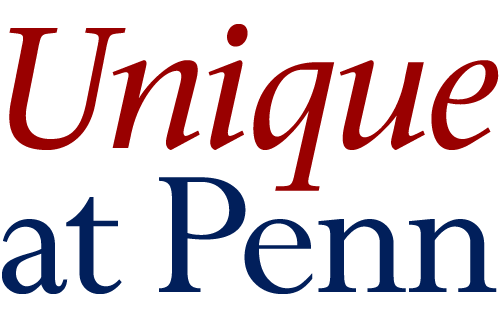The Arnold and Deanne Kaplan Collection of Early American Judaica contains a multitude of different mediums from books to playing cards to painted portraits. Some of the most prevalent items in the collection, combined to total over 2,900 items, are billheads, letters and envelopes from Jewish businesses. Along with the rich business history these little pieces of paper tell, a lot of them have beautifully printed depictions of the company’s storefronts, allowing viewers to imagine what someplace looked like over a hundred years ago. In this collection there are many documents with depictions of Philadelphia stores that look just how they did back then or no longer exist in the same form.
Join me as we go on a little tour of Philly, while examining what has and hasn’t changed since the 1800s:
The first group of photos are of buildings that have stayed relatively the same throughout the years. First, we have Moss Upholsters on Walnut Street, which now houses a seafood restaurant whose facade still advertises the Old Original Bookbinder’s seafood restaurant. It is clear that this space, in particular, had a very storied background, starting, at one point, as a simple upholstery shop and then receiving notoriety as a destination for great seafood.


Here is our second and final building that still looks the same as it did at the time of its printing. This was the factory building for the Standard Hosiery Co. in the early 1900s and, in the second picture, you can still see the initials of the company “SHCO” on the smokestack. Although it was hard to get a good comparison of this building at any angle from the ground, the building is still preserved in the same formation it was when the company printed this trade card over 100 years ago.


One of the first buildings that looks different over a hundred years later is Gumpert Bros.’s cigar factory. This lithograph was printed around 1888 for an advertising envelope for the company. The factory was clearly huge as it took up the whole block of what is now the Albert M. Greenfield School in Center City. Even though the block is not occupied with a factory anymore, one can at least visualize how large these factories were in the late 1800s.


Next, we have Blumenthal Bros. & Co. on North 3rd street. Although this one is not quite the same as when it was originally built, you can see that the building to the right of Blumenthal’s is still standing and looks pretty similar to when it did at the creation of this print.


One of the more interesting evolutions of how the land of buildings has changed is the lot where S. B. & M. Fleisher’s factory made Star Alpaca Braids. In addition to this lithograph printed for a pamphlet recommending Fleisher for business, the Kaplan collection contains a good amount of trade cards advertising their Star Alpaca Braids. Now this plot of land, that formerly housed a factory, houses the Growing Together Community Garden. Unfortunately, as I visited this plot in the winter, the garden is not in season and many of the plants are dead. From April to October, many Philly residents grow food and honey for themselves and their community, including for refugees and underserved communities. I really love this transformation from a factory to land that is used to feed Philly residents and bring joy to those who like gardening.


Our last building whose facade changed over the years is the store of S. Abeles & Co., selling millinery and straw goods. This plot of land is now at the intersection between the 8th street parking lot and a building of affordable housing for those who are unhoused or at risk to be unhoused.


Although there are no lithographs depicting any of the buildings in what is now called Franklin Court, there are many items in the Kaplan Collection which Benjamin Franklin and his grandson, Benjamin Franklin Bache, printed and published in these buildings. Benjamin Franklin is well known for many things, including his printing press in which he had a partnership with David Hall. The two men created a publishing partnership, Franklin and Hall, which then led to David Hall operating the printing shop after Franklin retired. David Hall was also half of the partnership Hall & Sellers, who printed some of the continental currency found the Kaplan collection. As we see in the first picture below, Benjamin Franklin Bache, grandson of Ben Franklin, started publishing the General Advertiser in 1790, one issue of which Kaplan has in his collection.


Another building not depicted in a lithographic form, but well-known to the Philadelphia area, is the Belmont Mansion in Fairmount Park. This building was home to many future politicians during the revolutionary era, featured prominently in Centennial Exposition of 1876 and was a site in the Underground Railroad. In the Kaplan collection, there is an invitation to Moses A. Dropsie to a banquet at Belmont Mansion for the president of the United States at that time, Rutherford B. Hayes. Now, in light of the discovery that one of the owners of the house, Judge Robert Peters, assisted enslaved people through the Underground Railroad, Belmont Mansion is the home of the Underground Railroad Museum open three days a week to visitors.

To see all of the buildings described in this post, I created an interactive map so that you can see for yourself how all these buildings have changed or discover famous places that are mentioned in the Kaplan Collection:


